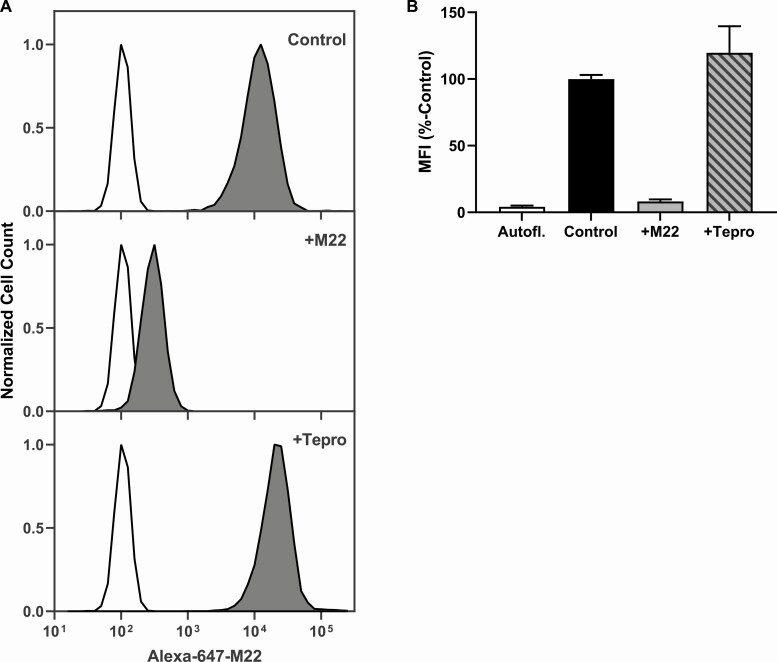Figure 2.
Tepro does not block M22 binding to TSHR. Tepro binding to TSH receptor (TSHR) was tested by determining whether Tepro, an anti-IGF1 receptor (anti-IGF1R) antibody, could inhibit binding of the monoclonal TSHR stimulating autoantibody (TSAb), M22, tagged with the fluorescent moiety Alexa-647 (Alexa-647-M22). Competitive binding between Alexa-647-M22 and untagged M22 or Tepro on HEK-TSHR cells, which were engineered to express TSHRs at high levels (see Materials and Methods), were tested by fluorescence activated cell sorting (FACS) analysis. Binding was performed by incubating cells with 1:5 ratio of Alexa-647-M22 to unlabeled M22 and Tepro. Competing ligands were added at 4°C 15 minutes before the addition of Alexa-647-M22 and subsequent incubation was for 1 hour at 4°C. (A) White histograms represent autofluorescence. Dark gray histograms show Alexa-647-M22 fluorescence intensity. Cells labeled with Alexa-647-M22 alone (control) exhibited an approximately 2-log peak shift (top panel). The peak shift on cells incubated with excess unconjugated M22 (+M22) was less than 1 order of magnitude. Excess unconjugated Tepro (+Tepro) did not affect the shift in peak (bottom panel). (B) Mean fluorescence intensity (MFI) was calculated as a % of control. Bars depict the average ± SEM of 3 experiments. MFI for autofluorescence (Autofl, white bar) was 4% of control (black bar), P < 0.0001). MFI for + M22 (gray bar) was 8% of control but not significantly different than Autofl. MFI for + Tepro (striped bar) was not significantly different than control.

